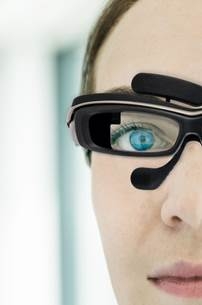Virtual reality (VR), augmented reality (AR), and artificial intelligence (AI) are big coin topics in future sensor markets. Each day, products are being developed to advance applications while bringing cost levels down out of the clouds.
Imec and Holst Centre have developed one such of a sensing technology to de technology that can detect eye movement in real time based on electrical sensing. The technology, according to its developers, promises to lead the way for the next generation of eye-tracking technology, with promising applications in virtual and augmented reality.

Most current eye movement detection technology uses high-resolution cameras embedded in eye-tracking screens or glasses. They are generally commercialized for numerous applications, including healthcare, research, and gaming. Cameras versus Sensors
Camera-based solutions can accurately determine where users are looking, however their frame rates are not fast enough to match the eye’s rapid movements, such as saccades, a typical movement during reading. Using a more sophisticated camera that matches the eyes’ speed would increase the already high cost of these devices. Imec’s solution is based on electrical sensing, yielding a far less expensive alternative while solving the issue of the image processing delay.
It works as follows. Sensors are integrated into a set of glasses, with four built-in electrodes around each lens, two to pick up the eye’s vertical movement and two for horizontal movements. Parallel to that, an algorithm translates movement signals into a concrete position, based on the angle the eye is making with its central point of vision. The hardware also offers insights on the eye’s behavior, like the speed of movement or the frequency and duration of blinks.
Other possible applications for this technology include a complement to current camera-based solutions, potentially developing cheaper and faster eye-movement detection devices. Currently being tested and showing promising results on eye behavior and blink detection, users are able to interact with screens by moving the cursor with their eyes and using different blinking patterns for distinct actions, such as selecting files, drag-and-dropping or opening and closing applications. Further information is available at http://www.imec.be ~MD